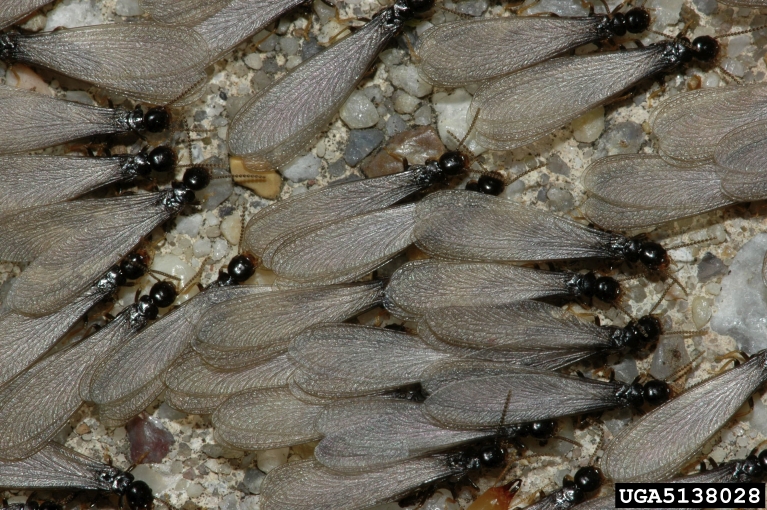
Photo Credit: UF/IFAS
What are flying Termites?
Flying termites, also known as swarmers or alates, play a crucial role in the life cycle of termite colonies. These termites are produced by mature colonies, which have typically been growing for five to eight years. Various factors influence the timeline, but once the colony is mature, it begins the process of creating swarmers.
When the conditions are right, these swarmers take flight, often in large numbers. Depending on the species, a swarming event can involve hundreds to tens of thousands of termites. However, flying termites are not strong fliers; they mainly glide and flutter until they find a suitable place to land. After landing, they lose their wings, pair up with a mate, and begin the process of establishing a new colony.
The good news for homeowners is that the majority of these swarming termites will die almost immediately. They become an easy meal for various predators, including insects, spiders, birds, and other animals. Even among the survivors, many will fail to find a suitable mate or a hospitable environment to start a new colony. However, it only takes two surviving termites to start a new colony, which can eventually grow to hundreds of thousands or even millions of termites, perpetuating the cycle all over again.
Identifying Flying Termites
Flying termites have two pairs of wings roughly equal in size. Their bodies can range from a honey-brown color to black. They have a pair of straight antennae.
Depending on the species swarming events can happen around noon, or later in the evening. Usually in warmer weather and often after rain. Again the timing can vary but often you can see swarming occur near the end of winter and the beginning of spring. Swarmers are typically attracted to light sources.
Make sure to check out this previous article explaining the key differences between an ant swarmer and a termite swarmer.

Leave a Reply